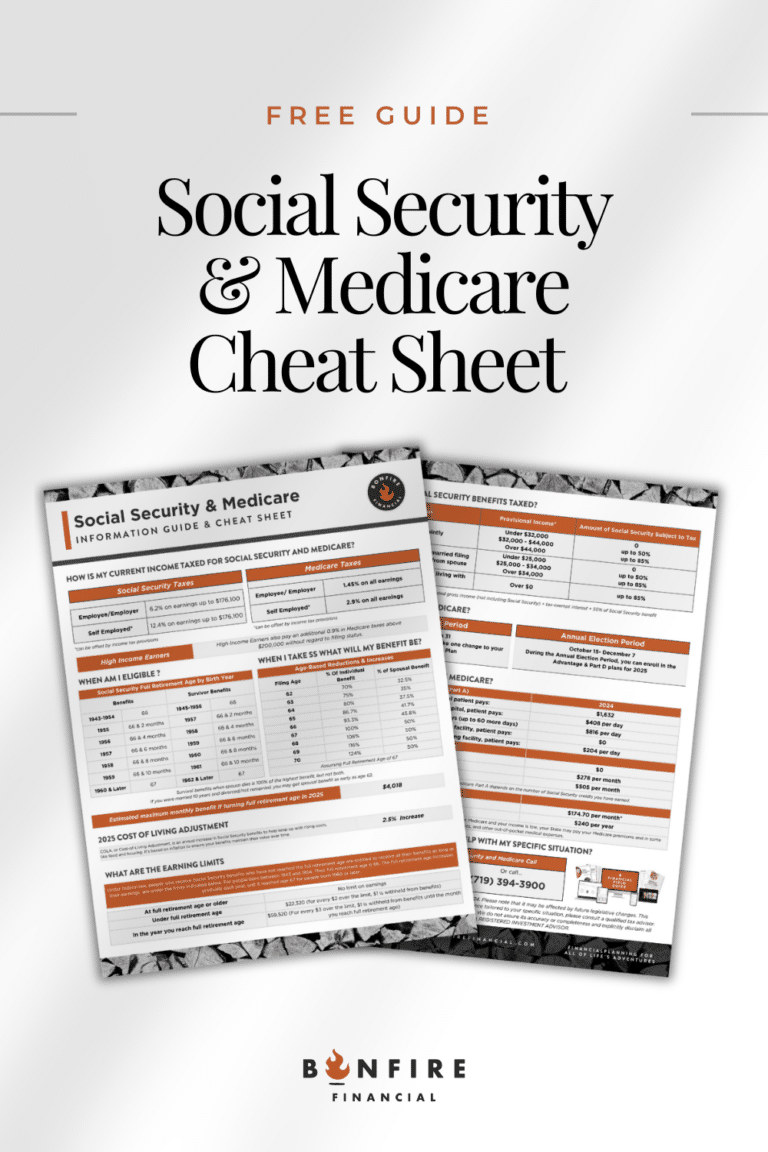Retirement marks a significant life transition, one that requires careful planning and a realistic understanding of what lies ahead. Despite all the guidance and information available, there are still many common retirement mistakes that many pre-retirees make, often without realizing the potential consequences. Avoiding these pitfalls can help ensure a comfortable and worry-free retirement. Let’s take a closer look at these three overlooked areas.
Listen anywhere you stream Podcasts
iTunes | Spotify | iHeartRadio | Amazon Music
Retirement Mistake #1 – Underestimating Healthcare and Medical Expenses
One of the most significant challenges that retirees face is handling healthcare costs. Many assume that Medicare will cover all their needs once they turn 65, but that’s far from the truth. While Medicare offers some assistance, it doesn’t cover everything. Parts of it, like Medicare Part B and Part D come with premiums based on your income.
According to recent studies, the average retired couple may need over $300,000 to cover medical expenses during retirement. And that number could rise as healthcare costs continue to increase. So, if you’re approaching retirement without a solid plan for medical expenses, you could be facing a serious shortfall.
Medicare Part A, which covers hospital stays, has its limits. It doesn’t provide full coverage for all medical costs, especially when it comes to long-term care like nursing homes or in-home care for chronic illnesses. You may find yourself needing additional Medicare Advantage plans or Medigap policies, both of which come with their own costs.
Long-term care is another often-overlooked area. No one wants to imagine themselves needing assistance due to age-related ailments. However, the reality is that many people will require some form of long-term care. Consider investing in long-term care insurance, especially if there’s a family history of illnesses like Alzheimer’s or Parkinson’s. Waiting too long to secure this type of insurance can result in significantly higher premiums or even disqualification based on pre-existing conditions.
Retirement mistakes are common. Preparing for healthcare costs in retirement is essential to avoid the unexpected financial strain, as Medicare alone won’t cover all expenses. By planning ahead and considering options like Medigap and long-term care insurance, you can better protect your financial future and ensure access to necessary care.
Retirement Mistake #2 – Ignoring Car Replacement and Maintenance Costs
While healthcare is a commonly discussed retirement expense, many people overlook the cost of maintaining and replacing their vehicles. Most retirees own a car and rely on it for day-to-day activities, whether it’s visiting family, going to the grocery store, or driving to leisure activities.
Cars don’t last forever, and depending on when you retire, you may need to replace your vehicle a few times. Cars come with maintenance costs, which only increase as the car ages. Routine expenses like oil changes, new tires, and brake repairs can add up, and unexpected repairs can come as a nasty surprise to anyone living on a fixed income. Beyond this, the price of new vehicles has been rising steadily, with even modestly priced cars costing tens of thousands of dollars. If you’re accustomed to driving luxury cars, that expense can easily double or even triple.
So, as you budget for retirement, make sure to factor in the potential costs of replacing your vehicle every 8-10 years. You’ll also want to consider rising costs due to inflation, especially if you’re hoping to drive a newer or more luxurious model. By setting aside funds specifically for car replacement and maintenance, you’ll be better equipped to handle these expenses without impacting other areas of your retirement budget.
Overlooking vehicle replacement and maintenance costs is another one of the common retirement mistakes that can lead to unexpected financial burden. By planning for these expenses, you can avoid costly surprises and keep your retirement budget on track.
Retirement Mistake #3 – Failing to Adjust Lifestyle Expectations to Fit Retirement Income
If you’re a high-income earner, you may be accustomed to a certain lifestyle—maybe it’s regular vacations, fine dining, or even memberships to clubs or organizations. Unfortunately, a luxurious lifestyle can be tough to maintain on a retirement budget.
The first step is to ensure that your savings can support your lifestyle. A general rule of thumb is to aim for about 70-80% of your pre-retirement income to maintain your standard of living. This can vary widely depending on your specific circumstances. For those accustomed to high incomes, this percentage can still leave a substantial gap if your expenses are disproportionately high.
Beyond savings, it’s essential to evaluate your current lifestyle and determine where adjustments might be necessary. You may need to make trade-offs to align your retirement spending with your income. For example, if luxury travel is a high priority, you might need to scale back in other areas, such as dining out or leisure activities. Conversely, if you have a passion for fine dining, you might consider fewer vacations or shorter trips to balance costs.
Take time to analyze your current spending and decide which elements are most important to you. If frequent travel is a priority, perhaps you can scale back in other areas to accommodate this passion. If you enjoy dining out, consider how often you’ll want to do so during retirement and factor that into your budget. It might mean fewer trips to five-star restaurants, but with thoughtful planning, you can still enjoy occasional indulgences.
You may also need to make some lifestyle adjustments to ensure your retirement savings last. This could involve downsizing your home, traveling less frequently, or taking a more conservative approach to discretionary spending. A financial advisor can help you analyze your spending and create a budget that balances your priorities with your resources.
Neglecting to adjust your lifestyle to match retirement income is a common mistake that can strain your finances. By recognizing these retirement mistakes early and planning accordingly, you can avoid financial stress and achieve a more sustainable retirement.
In Conclusion
The key to avoiding these common retirement mistakes is to start planning early. Work with a CERTIFIED FINANCIAL PLANNER™ to build a comprehensive financial plan that addresses healthcare costs, vehicle expenses, and lifestyle adjustments. By taking these steps now, you’ll be better prepared to enjoy a comfortable retirement free from financial stress. To recap:
Healthcare: Make sure to consider all aspects, from Medicare premiums to long-term care insurance.
Vehicles: Create a fund for car replacement and maintenance. Remember that you may need to replace your car multiple times during retirement.
Lifestyle: Be realistic about what your savings can support, and prioritize the areas that matter most to you.
Incorporating these three considerations into your retirement plan will ensure that you’re prepared for the reality of retirement, allowing you to focus on what truly matters—enjoying this new chapter of your life.
Next steps:
If you’re looking to avoid these retirement mistakes and plan confidently for the future, let’s chat. Schedule a call with us today to start building a retirement plan that works for you!
 Client Login
Client Login







